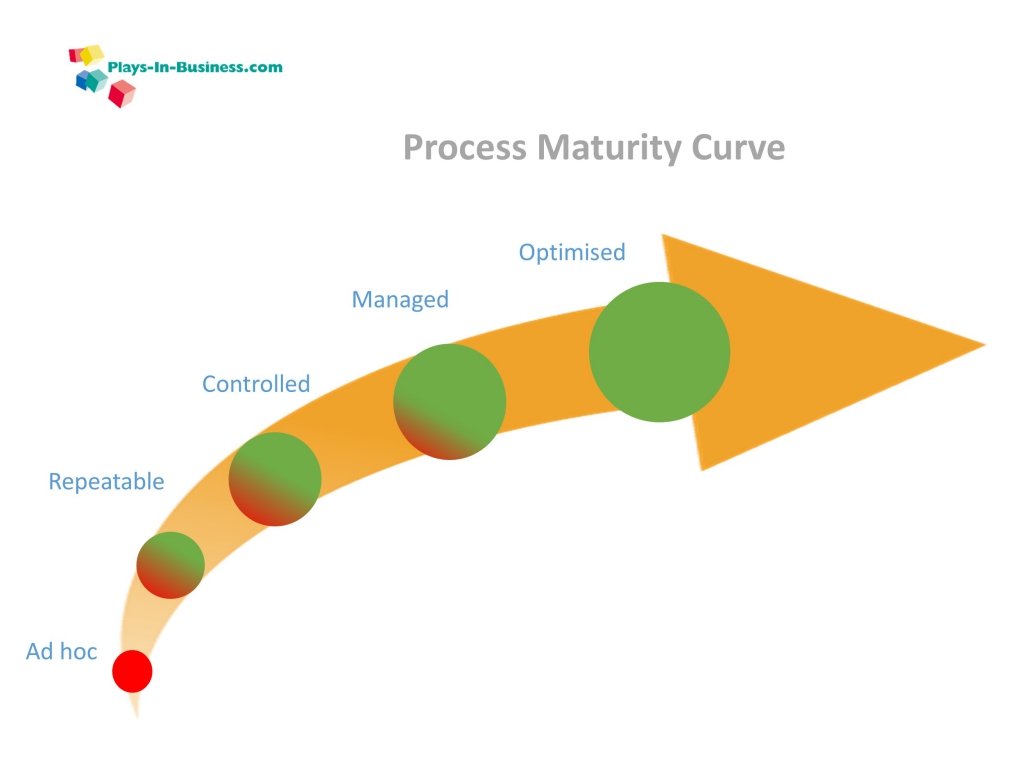Process Improvement

Improving product resp., software development processes implies improving how people work. Improving how people work implies empowering people to change.

For regulative environments like Automotive, Defense, Telecommunication, Aerospace/Avionics, Pharma, or Air Traffic Management industries there are well-established process maturity frameworks: Capability Maturity Model Integration (CMMI) and ISO 15504 (SPiCE) resp., Automotive SPICE®.
With these frameworks, organisations and teams have advices at hand to leverage step-wise the maturity of their development and working processes. The term maturity denotes the degree of institutionalisation and Optimisation of processes in an organisation. It is an indication of how close a process is to being complete & capable for continuous improvement.
- Level 1 Ad hoc: at this level the processes are normally undocumented and are in a state of chaotic change; they run in an ad hoc, reactive and uncontrolled way; they are person dependent and their sequence, timing and result varies during repetition and requires massive supervision.
- Level 2 Repeatable: the processes are repeatable with consistent results with some possibility; there is no rigorous process discipline, even a product owner is defined. There is variation among different people doing tasks in a process.
- Level 3 Controlled: standard practices are defined, documented, established, and implemented; and there is improvement to some degree over time.
- Level 4 Managed: process metrics and control methods are used by management uses to continuously align the processes to business objectives and customer requirements. The capability of the process is monitored.
- Level 5 Optimised: at this level the focus of processes is on continuously improving processes through both incremental and innovative improvements and changes.
You can apply these process maturity frameworks independently which product development methodology you follow: whether you use Waterfall or Agile/Scrum.
However, process maturity frameworks were historically designed from an engineering perspective.
In addition to this more technical path, I apply a solution-focused coaching approach to close this gap when I support you in improving your development processes by implementing Automotive SPICE® or Capability Maturity Model Integration (CMMI).
Automotive SPiCE is a process maturity framework to assess the capability and maturity of organisational processes to develop software resp. embedded systems in the automotive industry. It is a variant of ISO 15504 tailored to the needs of the automotive industry.
Automotive SPICE® is a registered trademark of VDA QMC
ISO/IEC 15504 (SPiCE) is an international norm to assess and evaluate the maturity of business processes for software and electronic development (embedded systems).
Reading Time: 15 minutes Capability Maturity Model Integration (CMMI) is a process improvement approach that provides organisations with the essential elements for effective process improvement in software engineering, organisational change, and organisational development.
Case Studies
Upcoming Events
Give Me A Kudo or A Feedback






































